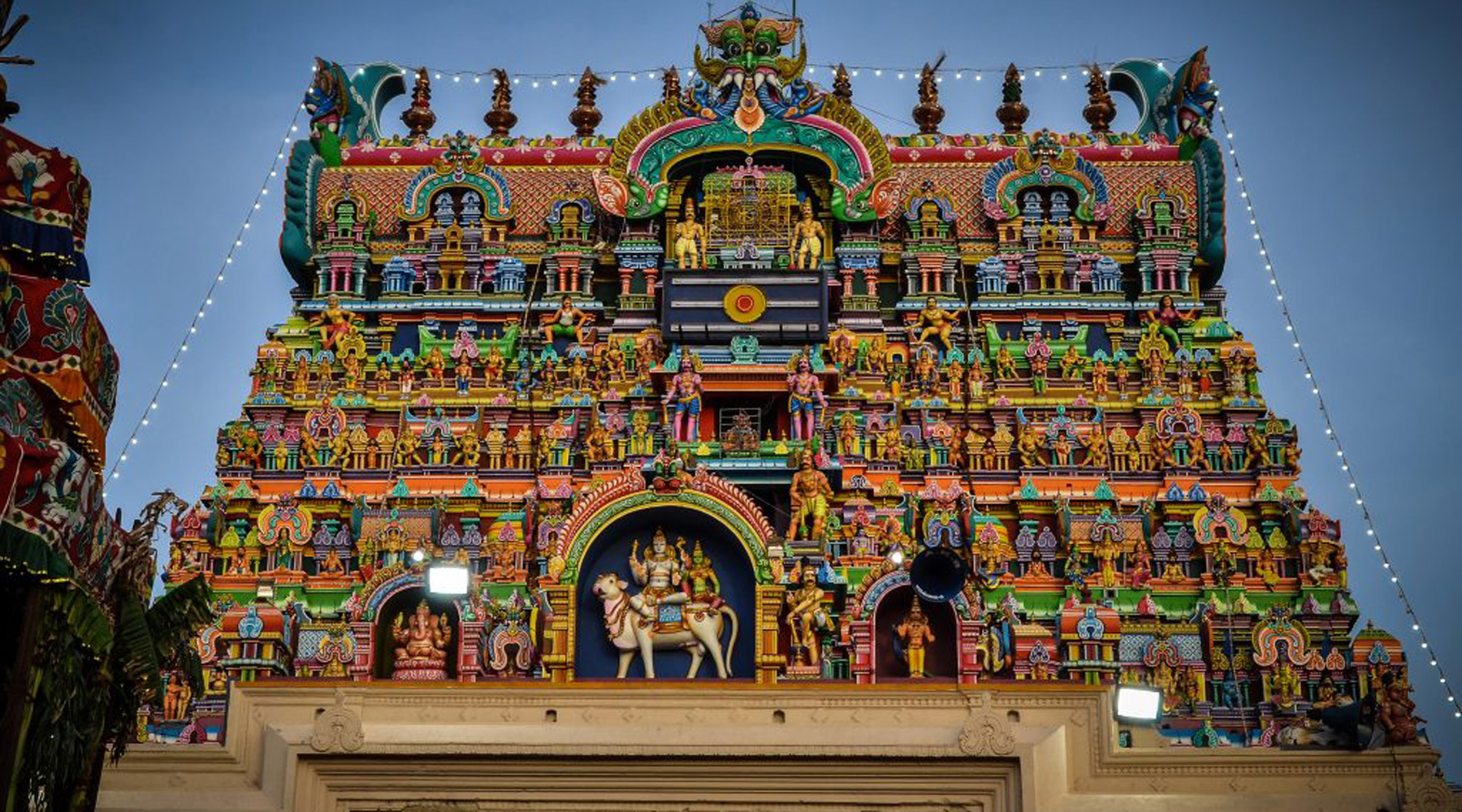If there is one landmark in Tirunelveli city that even a child can identify, it is the majestic Nellaippar Gandhimathi Amman Temple. Home to Lord Nellaiappar (from whom the city derives its name) and his consort Gandimathi Amman, the temple is the pulsing centre of Tirunelveli and holds a very special place in the hearts of its citizens.
A Glimpse Into Nellaiappar Temple History
Fondly called the Nellaiappar Temple, this holy shrine is known by many other names like:
- Venuvanam ( Venu- Bamboo tree, Vanam-forest)
- Nellore ( Nell- Paddy, Our- Place)
- Saaliveli
- Saalivaadi
- Tharugavanam
- Keelvembu Naatu Kulasekara Chaturavedhi Mangalam.
The stone inscriptions in the temple state that the original complex was built between 946-966 A.D by Chozan Thalaikonda Veerapandian. The entire temple complex covers an area of 14.5 acres, with multiple shrines enclosed within its concentric rectangular walls.
It is believed that the main complex of this magnificent abode was originally built by the Pandyas while the present structures were later developed by many great rulers, including the Cheras, Cholas, Pallavas and the Nayaks from Madurai. History says that the main gopurams and shrines were built during the reign of Nindraseer Nedumaran. It is also likely that the mani mandapam with its musical pillar was constructed during this same period. The temple's outer walls were built during the reign of the Pandian King, Kulasekara Pandian.
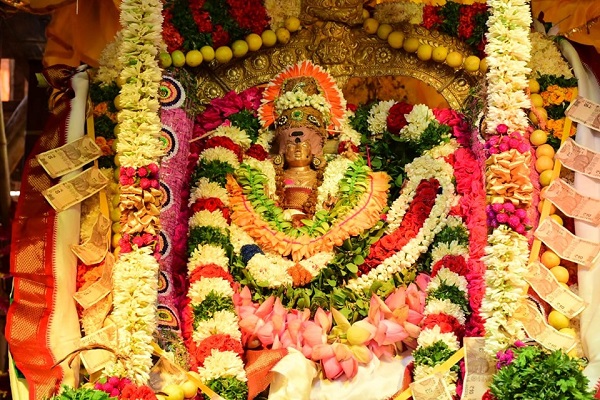
The Legend Of Nellaiappar Temple
The name "Tirunelveli" is a fusion of three words:
Nel - meaning rice paddy
Veli - meaning fence.
There is an interesting story about how this name was given to this place, which has been home to Nellaiappar Temple for centuries. The story talks about a poor Brahmin called Veda Sarma, a great devotee of Lord Shiva. Veda Sarma would beg for alms every day and offer the collected food and money to the Lord.
On one such occasion, Veda Sarma was drying the paddy he had collected for the Lord when it suddenly started raining. Worried the paddy might be washed away in the rain, Veda Sarma prayed to Lord Shiva, who heeded to his prayers and protected the paddy by covering it and standing around it like a fence.
The place where this divine incident occurred was called Tirunelveli, and Lord Shiva, the presiding deity of the temple, was christened Nellaiappar.
The Nawab's Wife
Another legend talks about a Nawab's wife suffering from an incurable disease. She consulted some Brahmins who advised her to seek Nellaiappar's blessings by performing certain holy rituals. The Nawab's wife followed the Brahmins' instructions and fervently worshipped Lord Nellaiappar. In the course of time, she miraculously recovered from the disease and gave birth to a male heir named Anavarata Khan.
Lord Nellaiappar's greatness greatly moved the Nawab and his wife. To honour the Lord, the Nawab built a special shrine with a Shiva Lingam in the south-eastern corner of the temple and named the Lingam after the prince. The Nawab and his son could worship the Lingam outside the temple through an opening in the outer wall of the prakaram just opposite the shrine.
A legend associated with this temple states that Lord Siva once took the form of a Lingam and made Tirunelveli his abode. It is said that all the four Vedas assumed the form of bamboo trees and stood around Him to provide shade. As a result, this Sthalam became known as Venu Vanam (Venu means bamboo tree, and Vanam means forest), and the Lord became known as Venuvananathar.
Literary Features That Mention Tirunelveli
The name "Tirunelveli" is mentioned in various works of Tamil literature. Some of the interesting mentions are seen in:
- U.V Saminatha Iyer's Madurai Kanji, where he mentions Tirunelveli as Saliyur.
- Thirugana Sambandhar’s 3rd Thirumarai,
- Sundara Moorthy Nayanar aruliya 7th and 12th Tirumarai,
- Azhagiya Sokkanathar Gandhiyammai Pillai Tamil,
- Pagazhikoothar’s Thirchendur Pillai tamil
- Thirunelveli Shrine's history written by Nellaiyappar Pillai has 120 parts and more than 6000 verses of poetry.
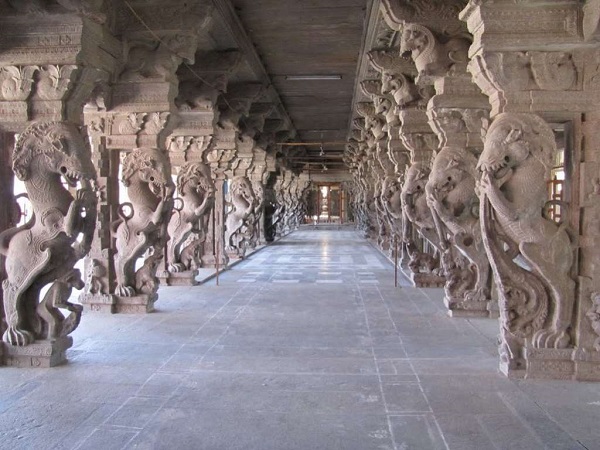
The Architectural Grandeur of Nellaiappar Temple
A trip to Nellaiappar Temple will leave you awe-struck at the beauty and magnificence of the ancient architecture that has withstood the test of time. More than fifty stone inscriptions talk about the temple, its history, and the rulers who contributed to it.
Some of the noteworthy architectural accomplishments unique to Nellaiappar Temple are:
- The intricately wood-worked Tamira Sabha.
- Vasantha Mandapam.
- Somavara Mandapam.
- Aayiram Kaal Mandapam or the 1000-pillared hall.
- Sangili Mandapam links the shrines of Lord Nellaiappar and Goddess Gandhimathi.
- The Copper Hall of Dance.
- The Nandi Mandapam which houses a regal Nandi or the bull.
- The Mani Mandapam is next to the Nandi Mandapam, with two giant pillars carved out of a single stone. The Mandapam has forty-eight sub-pillars which produce musical notes when struck.
The Nada Mani Mandapam has 161 smaller pillars which also make such notes. That a single rock can produce so many different musical notes is a testimony to the architectural prowess of our forefathers who built the great Nellaiappar Temple.
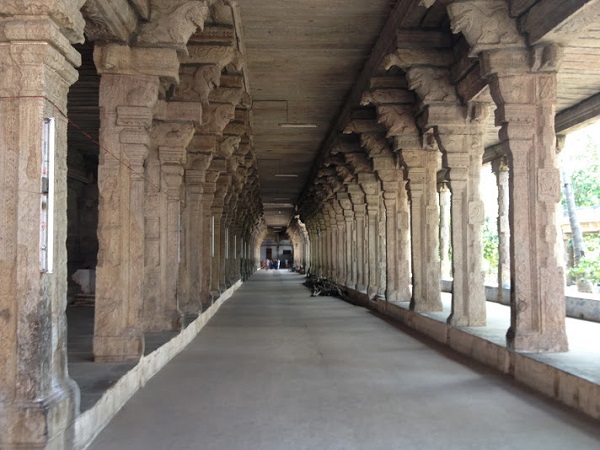
Another amazing feature in this temple is the shrine dedicated to Lord Sandhana Sabapathi or Lord Nataraja, adorned with sandalwood paste. This shrine is located right behind the Thamira Sabha. What's special about this shrine is that any visitor walking toward Thamira Sabha can see the spectacular view of Lord Sandhana Sabapathi right through the Sabha. Want to witness this breathtaking architectural wonder? Visit Nellaiappar Temple today!
Other Interesting Facts & Trivia About Nellaiappar Temple
- The temple's main deity is Lord Nellaiappar, who resides with his divine consort Goddess Gandhimathi Amman.
- Generally, Lord Murugan has six faces, and it is difficult to see all of them in a hexa-faced idol. However, Lord Murugan's shrine in Nellaiappar temple is the only place where you can move around and have a complete darshan of all the six faces.
- The temple's Brahmmotsavam takes place during the Tamil month of Aani and goes on for nearly thirty days, from June 15th to July 15th.
- Lord Kuberan, the God of Wealth, exists in the form of a Lingam inside a gold-plated shrine.
- The Navagraha Buddha, which faces east in all other temples, faces the northern direction in the Nellaiappar temple.
The temple has three famous Lingams:
- Moolavar Sri Venda Valartha Nathar/Shri Nellaiappar, renowned as the Sri Moongil Venuvaneswarar.
- The Lingam which is believed to have been worshipped by Lord Vishnu.
- "Paadhala Linga" or "Adhi Moolava ", which lies below the sanctum sanctorum.
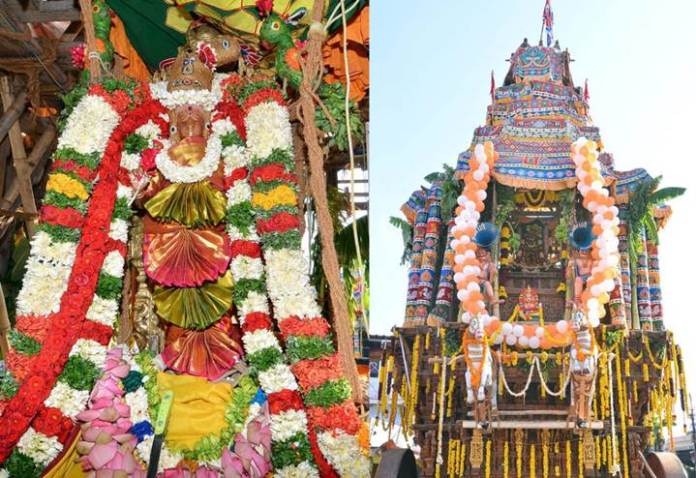
Major Festivities & Special Days of Nellaiappar Temple
The Nellaiappar temple is always abuzz with many festivities that bring devotees from far and wide. Apart from the weekly and monthly special days, the major festivals celebrated here include:
- Arudra Darisanam
- Brahmotsavam ( in theTamil month of Aani)
- Thiru Kalyanam
- Navaratri
- Thaipoosam (during the Tamil month, Thai)
- Tirukalyanam festival (Aippasi month October 15 - November 15) is celebrated as the divine marriage day of Lord Nellaiappar and Goddess Sivakami.
- The Nellaiappar Idol and the Sivakami Idol are dressed in gold and mounted on a golden temple car, which is driven around the temple premises.
Annadhanam
The Annathana, or free meal scheme, was launched in 2002 by the then Chief Minister of Tamil Nadu. Every day 100 people get meals from this scheme.
How To Find Your Way to Nellaiappar Temple
Tirunelveli is one of the most prominent cities in South Tamilnadu. It is a major business hub well-connected by road, rail, and air. The Nellaiappar Temple sits right in the centre of the town and is accessible by car, autorickshaws and bus.
Road access: Tirunelveli connects all major cities and towns via National Highways and State Highways.
Rail access: The Tirunelveli Railway Junction lies at a distance of 5 kilometres from the temple.
Air access: The nearest airport is at Tuticorin, about 30kms from Tirunelveli.
The airports in Madurai and Trivandrum are the other major access points from where you can take taxis or state-run buses to Tirunelveli.
What are you waiting for? Book your tickets, pack your bags, and start off on your journey to the divine Nellaiappar Temple. For more details on Tirunelveli and other related information visit TirunelveliToday website.

